The world of marketing has changed forever.
Once upon a time, a clever ad or a TV spot could define a brand.
Today, your story unfolds in the scroll of a thumb, the tap of a heart, or the comment of a stranger.
Social Media Marketing isn’t just about posting; it’s about positioning.
It’s the art of building communities, not just campaigns — and creating conversations that lead to conversions.
In 2026, social platforms have evolved into digital ecosystems where your content, your personality, and your purpose intersect. If you’re a marketer, entrepreneur, or brand visionary, this blueprint will show you not just how to market — but how to connect, influence, and grow sustainably.
What Is Social Media Marketing?
At its core, Social Media Marketing (SMM) is the strategic use of digital networks to attract attention, engage audiences, and build long-term relationships that translate into business growth.
It’s not about shouting the loudest — it’s about saying the right thing to the right people at the right time.
It’s how startups become brands and how brands become movements.
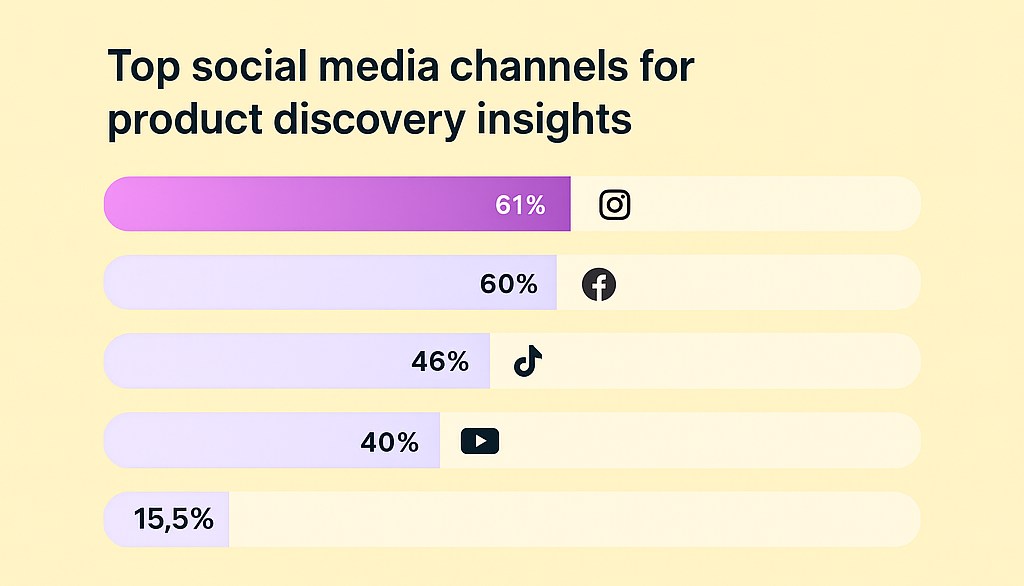
In practical terms:
- You share your message through posts, videos, and stories.
- You build trust through interaction and consistency.
- You analyze data to understand what your audience loves.
But at a deeper level, social media marketing is digital storytelling with purpose.
What Is Your Goal?
Before creating a single post, you need absolute clarity about your goal — because purpose shapes performance. Every like, comment, and share should connect back to a defined objective. Are you trying to build awareness, generate leads, or increase sales? Your goal isn’t just a metric; it’s your mission statement in motion. Without it, even great content drifts without direction. With it, every creative choice — from caption to campaign — works like a compass pointing toward measurable impact. Clarity turns creativity into strategy, ensuring your time on social media translates into meaningful business growth.
Ask yourself: Why am I doing this?
Your goal defines your content, your tone, and your tools.
For entrepreneurs, it might be brand awareness.
For marketers, it might be lead generation or conversion optimization.
For startups, it’s often community growth and credibility.
Common goals include:
- Building a recognizable brand voice
- Driving traffic to your website
- Generating qualified leads
- Increasing sales or sign-ups
- Enhancing customer loyalty
Clarity drives consistency, and consistency drives trust — the foundation of every great brand online.
What Is Your Target Audience?
Imagine standing on a stage with a million people in front of you. Who do you talk to first?
Before diving into metrics or creative brainstorming, step back and define your goal—the “why” behind every post. Without direction, even beautiful content fades into the noise of the feed. A clear goal gives every story, caption, and campaign a measurable purpose. Are you here to educate, inspire, sell, or build authority? When your objective is specific, your content becomes sharper and your audience feels guided, not sold to. Think of your goal as the North Star of your marketing efforts—it doesn’t just keep you on track; it ensures every piece of content moves your brand toward real, sustainable growth.
See the social media marketing growth size of the market in near future till 2032
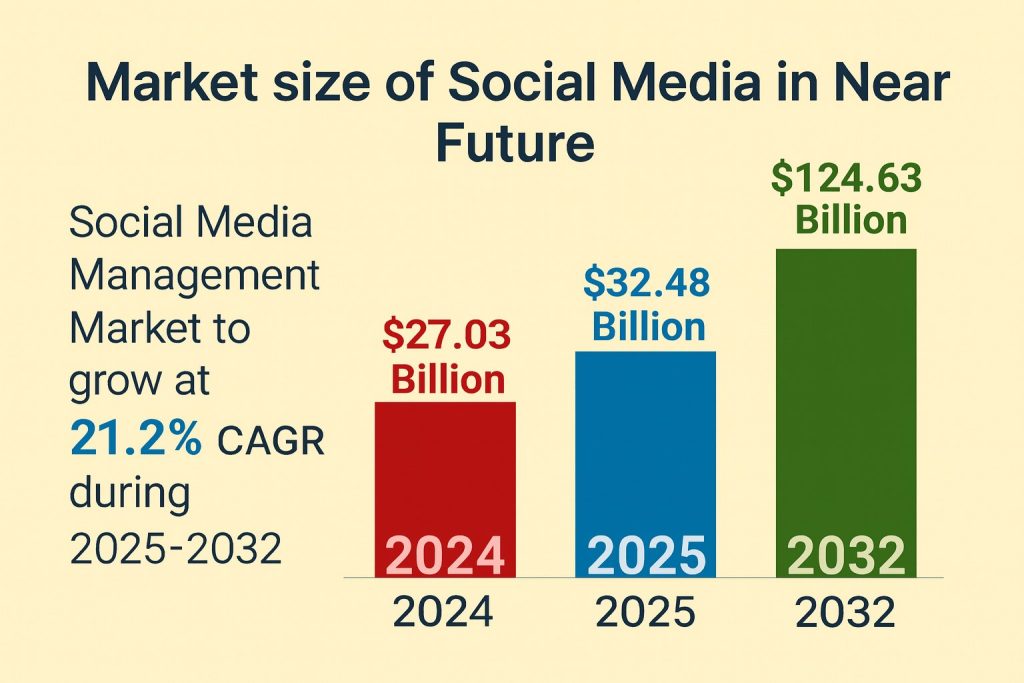
That’s what defining your target audience means.
Without it, even the best content fades into digital noise.
North American Social Media Market Size
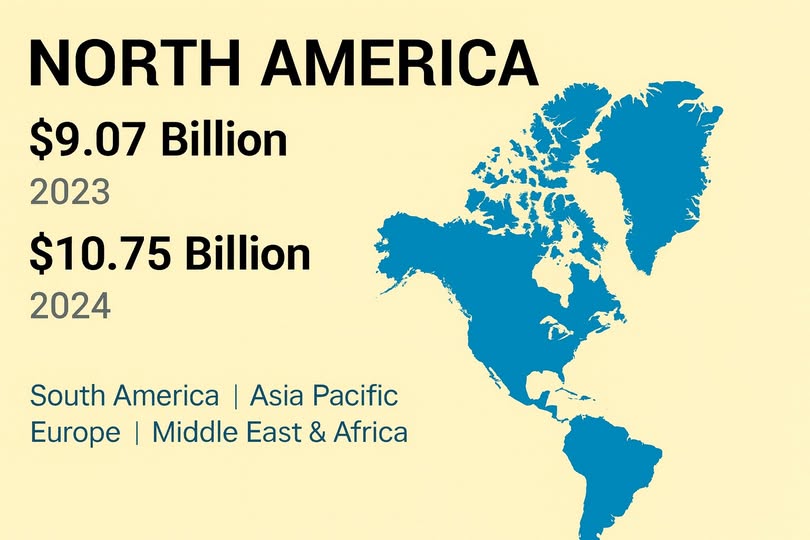
To understand your ideal audience:
- Identify their demographics (age, gender, income, region).
- Understand their psychographics (pain points, goals, motivations).
- Discover their behavior (when, where, and how they use social media).
- Track platform preference (LinkedIn for B2B, Instagram for visuals, TikTok for youth engagement).
When you know your audience intimately, your messaging becomes magnetic — because it feels personal.
What’s New About Social Media Marketing in 2026?
Social media marketing in 2026 is no longer just about visibility—it’s about precision, prediction, and personalization. The landscape has matured into an intelligent ecosystem where algorithms understand emotions and AI anticipates user intent. Brands that blend technology with authenticity are rewriting the rules of engagement.
Welcome to the era of AI-powered creativity and algorithmic empathy. Artificial Intelligence now helps marketers forecast trends, personalize campaigns, and even write adaptive content in real time.
Here’s what’s reshaping SMM in 2026:
- Social SEO is merging with Google Search—platforms like Instagram and TikTok are becoming discovery engines.
- AI influencers and virtual creators are emerging as credible voices.
- Micro-content (under 15 seconds) dominates mobile feeds. And If you can integrated with micro influencers will boost a great mileage in near future.
- Community marketing is replacing follower-count obsession.
- Data privacy and authenticity have become the new currencies of trust.
The brands winning in 2026 aren’t the loudest—they’re the most authentic, predictive, and adaptive.
How Should You Frame Your Message?
Framing your message is where creativity meets clarity — the moment your brand’s heart translates into words. Before you design, post, or promote anything, understand that your message is more than marketing copy; it’s your digital handshake. It introduces who you are, what you stand for, and why people should care. A well-framed message should reflect your purpose, trigger emotion, and guide action. It must sound like you, feel authentic, and stay consistent across every touchpoint. When your message resonates, your brand stops competing for attention — it starts commanding it.
Your message is your magnet.
Every brand has a voice, but not every voice connects.
The key? Speak with clarity, emotion, and intent.
Ask three questions before publishing any post:
- Does this content align with my brand story?
- Does it solve or inspire something for my audience?
- Does it invite conversation or just broadcast?
When you communicate with empathy, you humanize your brand.
That’s why marketers who blend emotion and data see 3× more engagement.
Keep your language conversational, visual, and purposeful. Social media is a dialogue, not a declaration.
What Is a Social Media Marketing Strategy?
Every successful brand online begins with a strategy or they start with a roadmap — not luck. A Social Media Marketing Strategy is the backbone of every winning campaign, the blueprint that transforms random posts into purposeful progress. It’s a roadmap that connects your brand goals with your audience’s behavior, ensuring every post has meaning and direction. A great strategy defines what platforms to use, what content to create, how often to post, and how to measure results. In simple terms, strategy turns activity into achievement — without it, you’re just posting into the noise; with it, you’re building impact with intention.
It covers:
- What platforms to use
- What type of content to create
- How often to post
- How to measure performance
- How to refine and adapt
In simple words: strategy turns activity into achievement.
Without it, you’re just posting into the void.
With it, you’re creating influence with intention.
Why Should You Have a Social Media Marketing Strategy?
Every post, video, or campaign you publish carries a cost — not always in money, but in time, energy, and opportunity. Without a strategy, that cost rarely converts into meaningful growth. A Social Media Marketing Strategy gives direction to creativity; it transforms scattered effort into focused momentum. It’s your roadmap in a digital world that changes every week, ensuring your content doesn’t just exist but performs.
A clear strategy allows you to:
- Stay consistent across platforms so your audience recognizes your voice everywhere.
- Measure results with precision, turning likes and shares into real business insights.
- Save time through scheduling and batching, so marketing doesn’t feel like chaos.
- Build brand identity intentionally — because every message should strengthen your reputation.
- Adapt quickly to new algorithms, trends, or audience behavior without losing direction.
When you have a strategy, you stop chasing trends and start setting them. The most successful brands don’t post daily by accident — they post by design.
And that’s the real secret: strategy isn’t about controlling outcomes, it’s about multiplying opportunities. It’s what separates marketers who simply post content from those who build movements.
Benefits of Social Media Marketing for Businesses
In today’s business landscape, social media is more than a platform — it’s a profit engine and a direct bridge between your brand and your customers. What once required million-dollar ad budgets can now be achieved through strategic storytelling, creative consistency, and genuine connection. Businesses that understand this are not just gaining followers; they’re building communities, generating leads, and creating loyal customers who advocate for them daily.
See the social media management market segments for business insights
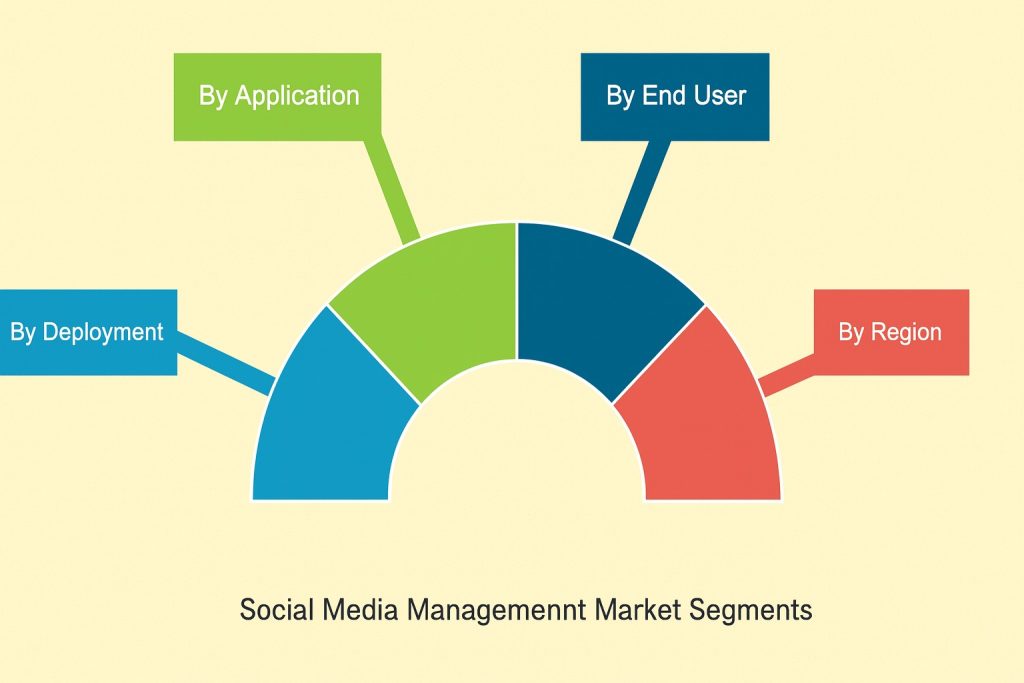
Let’s explore the deeper benefits that make Social Media Marketing (SMM) one of the most powerful business tools of our time:
1. Global Reach at Minimal Cost
Social media platforms eliminate geographical barriers. A single post can reach thousands—or millions—without the expenses of traditional advertising. This means small businesses can compete with large brands on the same stage.
2. Real-Time Customer Insight
Every like, comment, and share is valuable data. SMM gives you a direct view of audience behavior, preferences, and pain points. These insights help refine products, services, and future campaigns with real market feedback.
3. Lead Generation and Sales Growth
Strategic content turns casual followers into qualified leads. Platforms like Instagram, LinkedIn, and Facebook now offer native lead forms and e-commerce integrations, allowing seamless sales funnels from discovery to checkout.
4. Brand Trust and Authority
Trust is the new currency of business. By maintaining authenticity and consistency—sharing your values, responding to feedback, and telling real stories—you build a brand people believe in. Over time, followers become loyal advocates who amplify your message organically.
5. Customer Retention and Relationship Building
It’s far cheaper to retain a customer than acquire a new one. Through direct engagement—personal replies, appreciation posts, and tailored offers—brands can maintain long-term relationships and keep their community active and loyal.
6. Competitive Edge Through Visibility
Social media allows you to stay visible in your market’s conversation. The more your audience sees you, the stronger your top-of-mind awareness becomes. This visibility creates trust, and trust drives conversions.
In short, social media marketing multiplies every aspect of business growth—from exposure and credibility to leads and retention. In this digital era, visibility no longer belongs to those with the biggest budgets—it belongs to those with the clearest voices and most consistent value.
Take Good Advantage of SEO
SEO and Social Media Marketing are no longer separate strategies — they’re twin engines driving online visibility and authority. Every like, comment, and share strengthens your digital footprint, signaling to Google that your brand is credible and relevant. To build real organic power, marketers must master both on-page and off-page SEO, and understand how technical SEO supports content performance.
On-Page SEO focuses on optimizing what’s within your control — content structure, keyword placement, title tags, meta descriptions, and internal linking helps to grow on-page seo for complete optimization. Your posts, blogs, and landing pages should target precise search intent with clear, keyword-rich language. Strategically placing anchor texts (for example, “learn more about marketing automation” linking to your automation guide) strengthens topical authority and improves navigation.
Off-Page SEO expands your influence beyond your own website through backlinks, guest posting, influencer collaborations, and social mentions. When reputable sources link to your brand, search engines see it as a mark of trust.
Finally, Technical SEO ensures your site runs smoothly — with mobile responsiveness, fast load times, secure HTTPS, clean code, and crawlable URLs. A technically sound site enhances user experience, reducing bounce rates and boosting discoverability.
When your content is consistently shared, Google recognizes it as relevant and trustworthy.
To maximize results:
- Include target keywords naturally in captions and bios.
- Use relevant hashtags that align with your industry.
- Add alt text for accessibility and ranking.
- Optimize video titles and thumbnails for discoverability.
The more you integrate SEO thinking into your social strategy, the faster your brand visibility compounds.
How to Create a Complete Data-Driven Social Media Marketing Strategy
A powerful social media marketing strategy isn’t born from guesswork — it’s built from data, intent, and iteration. Every post, caption, and campaign should have a purpose that can be measured and improved. In 2026, successful marketers no longer rely on trends alone; they rely on insights. A data-driven approach allows you to understand your audience’s behavior, identify what resonates, and predict what will work next. The key is to merge creativity with analytics — where every decision is guided by both emotion and evidence. Let’s break down the process step by step.
Step 1: Define Objectives
Before creating content, know exactly what you’re aiming for.
Your objectives could include:
- Brand Awareness: Increasing followers and reach
- Lead Generation: Capturing potential customer data
- Sales & Conversions: Driving measurable purchases or sign-ups
- Engagement: Building meaningful relationships with followers
Each goal needs a quantifiable metric — for example, “Increase engagement rate by 25% in three months.” Data clarity ensures focused creativity.
Step 2: Know Your Audience
Data is storytelling in numbers.
Analyze insights from your platforms — age, location, gender, activity time, and content preference. Use audience personas to bring data to life: who they are, what they value, and why they engage. Tools like Meta Insights, Google Analytics, and TikTok Business Suite reveal what your community truly wants. When you understand who you’re talking to, your content begins to speak for them.
Step 3: Choose Platforms Wisely
Not every platform fits every business.
- Instagram & TikTok: Great for visual brands and storytelling.
- LinkedIn: Ideal for B2B marketing and professional authority.
- YouTube: Perfect for long-form education and tutorials.
- Facebook: Strong for communities and local reach.
Focus where your target audience spends time and where your content format thrives. Diversify only when you have mastered your core channels — quality beats quantity.
Step 4: Plan Content Around Pillars
Consistency thrives on structure.
Create content pillars — core themes that keep your messaging aligned yet diverse.
Examples:
- Educate: Share industry insights, tips, and tutorials.
- Engage: Polls, challenges, and questions.
- Entertain: Humor, relatable stories, or behind-the-scenes moments.
- Promote: Product launches, testimonials, or offers.
A balanced mix of these pillars ensures your audience feels informed, inspired, and connected to your brand every week.
Step 5: Maintain Consistency
Algorithms love rhythm, not randomness.
Schedule posts using tools like Buffer, Hootsuite, or Later to maintain regularity. Consistency builds trust — your audience expects to see you show up. Develop a posting cadence (daily, weekly, or bi-weekly) that’s sustainable. Consistency also applies to tone, colors, and design — your presence should look and sound unified across all platforms.
Step 6: Experiment and Evolve
Data doesn’t limit creativity; it sharpens it.
Experiment with new formats — Reels, live sessions, infographics, and stories. Track performance metrics like watch time, saves, and shares.
- A/B test captions and visuals.
- Study engagement heatmaps to identify the best posting times.
- Use trend analytics to adapt quickly.
Innovation keeps your brand dynamic while data ensures every experiment is strategic, not random.
Step 7: Measure, Analyze, and Adjust
Every campaign should end with reflection.
Measure what worked, what failed, and why. Use metrics such as CTR, engagement rate, conversion rate, and sentiment analysis. Monthly performance reports highlight progress and gaps.
Adjust accordingly:
- Reinforce high-performing content types.
- Optimize weak areas with new creative approaches.
- Revisit goals quarterly to stay aligned with evolving audience behavior.
A data-driven strategy is never static — it’s a cycle of creation, measurement, and improvement. The brands that win in 2026 are not the ones posting the most — but the ones learning the fastest.
What Kind of Partnerships Should You Build?
Partnerships are your growth accelerators.
Collaborate with influencers, industry peers, or complementary brands.
But avoid superficial tie-ups — go for authentic synergy that enhances your shared audience experience.
Types of strategic collaborations:
- Influencer Partnerships: Boost credibility through trusted voices.
- Brand-to-Brand Collabs: Cross-promote to new audiences.
- Community Partnerships: Engage in cause-driven campaigns that build goodwill.
The right partnership isn’t about exposure — it’s about alignment.
When both brands share values, the result feels organic, not opportunistic.
Measure, Analyze, and Adjust Your Social Marketing Strategy
If you observed globally all kind of successful social media brand learns faster than its competitors. The secret lies not just in creating content but in understanding it — what worked, why it worked, and how to replicate success. The process of measuring, analyzing, and adjusting transforms your campaigns from experiments into systems. This is the cycle that keeps your strategy alive, relevant, and profitable. Social media isn’t a straight road; it’s a loop of learning. Every post, comment, and click becomes valuable data that shapes your next move. Let’s dive deeper into each element of this continuous growth cycle.
Measure
Measurement is the foundation of improvement. Track every metric that reveals how your audience interacts with your content — impressions, engagement rate, click-through rate (CTR), follower growth, conversions, and ROI. Use tools like Meta Insights, Google Analytics, or LinkedIn Dashboard to visualize performance. The goal isn’t to obsess over numbers but to understand patterns. Measuring gives you perspective: it shows where your brand is thriving and where it’s silent. Consistent tracking transforms assumptions into actionable insight, ensuring that every creative effort produces tangible progress.
Analyze
Analysis turns raw data into direction. Once you’ve gathered your metrics, look for the stories behind them. Which posts spark the most engagement? What time of day drives clicks? Which audience segment reacts most strongly to specific formats? Use these insights to identify what your audience truly values. Go beyond surface numbers — analyze sentiment, content tone, and engagement quality. Understanding why something worked helps you repeat success deliberately. In this phase, creativity meets intelligence, allowing your future campaigns to be smarter, sharper, and more human.
Adjust
Adjustment is where growth happens. Based on your analysis, refine your content calendar, messaging, and targeting. Double down on high-performing strategies — whether it’s short-form videos, carousels, or user-generated content. Eliminate or rework what underperforms. Adjust posting frequency, experiment with new hashtags, or tweak visuals to align with insights. This process keeps your brand agile in a landscape that changes daily. Remember, optimization isn’t a one-time fix; it’s a rhythm of improvement. Brands that adjust regularly stay relevant, responsive, and ready for the next opportunity before others even notice it.
Never chase vanity metrics. Focus on results that matter — engagement, trust, and long-term retention.
Optimization is not a task; it’s a rhythm.
How Important Are Brand Values and Identity?
Your content tells people what you do.
Your values tell them who you are.
In a noisy marketplace, people don’t buy just products — they buy beliefs.
Your brand identity should reflect authenticity, empathy, and purpose.
Ask yourself:
- What does my brand stand for?
- How does my tone make people feel?
- Would I follow my own brand if I wasn’t running it?
When your visuals, message, and values align — trust follows naturally.
Your identity is your digital fingerprint — protect it, nurture it, and make it unforgettable.
What Is the Core Formula for Success?
In a world overflowing with content, success in social media marketing doesn’t come from posting more — it comes from posting with purpose. Every thriving brand, whether it’s a startup or a global name, follows a consistent pattern that defines long-term growth. The formula is simple yet powerful: C + A + E = Success, which stands for Consistency, Authenticity, and Engagement. These three pillars are what separate temporary visibility from lasting influence. Let’s break down each component in depth.
- Consistency: Regular posting builds visibility and trust.
- Authenticity: Real stories create emotional connection.
- Engagement: Conversations convert passive viewers into active advocates.
Bringing It All Together
The C + A + E formula might sound simple, but its execution demands discipline. It’s not a one-time campaign — it’s a mindset. When you’re consistent, your brand becomes recognizable. When you’re authentic, your brand becomes relatable. When you engage, your brand becomes memorable.
Success isn’t built in a single viral post — it’s built through daily habits, meaningful conversations, and a clear identity. In 2026 and beyond, the brands that combine consistency, authenticity, and engagement will outlast algorithm changes, audience shifts, and market noise.
Because while trends fade, human connection never does.
This formula may sound simple — but executing it daily is what separates average brands from extraordinary ones.
Future of Social Media Marketing
The future of social media marketing is not just about keeping up with trends — it’s about creating meaningful digital experiences that blend AI technology, emotion and trust. As attention spans shrink and algorithms evolve, the brands that will thrive aren’t those shouting the loudest but those speaking with purpose, precision, and empathy. We’re entering an age where marketing becomes less about “selling” and more about “serving.” Businesses that embrace innovation, personalize content intelligently, and uphold authenticity will not just survive — they’ll lead. The future belongs to brands that understand people, not just platforms.
The next chapter of marketing belongs to storytelling powered by technology.
Expect to see:
- AI-assisted creativity replacing repetitive design work, enabling marketers to focus on strategy and storytelling rather than production.
- Augmented Reality experiences transforming e-commerce into interactive storytelling, allowing customers to virtually test products before purchase.
- Interactive live shopping blending entertainment with purchase intent — turning every stream into a sales opportunity.
- Voice-driven discovery emerging across smart devices, making voice search a key part of brand discoverability.
- Decentralized networks creating ad-free community spaces, prioritizing trust, transparency, and digital ownership.
Yet amid all the innovation, one truth remains timeless:
People don’t follow logos; they follow leaders.
Technology will evolve, algorithms will change, but emotional connection will always be the most powerful marketing currency. Those who communicate with authenticity and vision will continue to lead in the future of social media marketing.
Common Challenges and How to Overcome Them
Even the most successful brands face hurdles in the ever-changing world of social media. Algorithms shift, audiences evolve, and new platforms appear overnight. But every challenge presents a chance to adapt, innovate, and lead. The difference between brands that struggle and those that thrive lies in their ability to anticipate change, learn from data, and respond with creativity. Below are the most common challenges faced by marketers and entrepreneurs — and proven ways to overcome them with strategy and resilience.
1. Algorithm Changes and Visibility Drops
Algorithms determine who sees your content — and they’re constantly evolving. A minor change can reduce your reach overnight, leaving your once-thriving engagement stagnant.
How to Overcome:
- Diversify your content: Don’t rely on one format — mix short videos, carousels, and stories to maintain reach.
- Post consistently: Algorithms reward regularity.
- Engage authentically: Genuine interactions boost ranking more than passive posting.
- Leverage analytics: Track reach and engagement patterns to adapt quickly.
- Build an owned audience: Use newsletters or community platforms to stay connected outside of algorithms.
Staying adaptable and proactive keeps your brand visible even when algorithms change their rules.
2. Content Fatigue and Audience Burnout
With endless content flooding every feed, audiences are more selective than ever. Repetitive or uninspired posts lead to content fatigue, where followers scroll past without noticing.
How to Overcome:
- Tell stories, not slogans: Share personal experiences, customer journeys, or brand milestones.
- Focus on value: Educate, inspire, or entertain in every post.
- Repurpose smartly: Turn one idea into multiple formats — videos, infographics, or quotes.
- Listen to your audience: Ask what they want to see more of.
- Inject emotion and humanity: People connect with real faces and feelings, not templates.
When your content starts a conversation instead of filling space, fatigue turns into fascination.
3. Handling Negative Feedback and Online Criticism
Every growing brand faces criticism — sometimes fair, sometimes not. How you respond defines your reputation far more than the comment itself.
How to Overcome:
- Respond quickly but calmly: Acknowledge concerns without defensiveness.
- Take responsibility: If a mistake happened, own it. Transparency earns respect.
- Move the conversation private: Resolve issues through DMs or email for a personal touch.
- Highlight positive experiences: Balance negativity by showcasing testimonials and happy customers.
- Monitor sentiment: Use social listening tools to spot and manage issues early.
Remember, every complaint is feedback in disguise — and handling it gracefully often turns critics into advocates.
4. Limited Budgets and Resource Constraints
Not every brand can spend big on ads or full-time content teams. But social media has leveled the playing field — creativity often beats capital.
How to Overcome:
- Leverage organic reach: Focus on strong storytelling and value-driven posts.
- Collaborate: Partner with influencers or complementary brands for mutual visibility.
- Encourage UGC (User-Generated Content): Let customers tell your story authentically.
- Plan smarter: Batch create content and use automation tools to save time and money.
- Track ROI closely: Invest only in formats or campaigns that prove measurable impact.
In the age of authenticity, people respond more to real stories than polished ads — making creativity your greatest cost-effective weapon.
5. Burnout and Maintaining Consistency
Managing multiple platforms, campaigns, and creative output can drain even experienced marketers. Burnout kills creativity, and inconsistency confuses audiences.
How to Overcome:
- Batch and automate: Plan a month’s content in one go using scheduling tools.
- Set realistic posting goals: Quality beats quantity; it’s better to post three strong pieces weekly than seven weak ones.
- Delegate or outsource: Free up mental space by sharing responsibilities.
- Take creative breaks: Step back to recharge and return with fresh perspective.
- Keep inspiration lists: Save ideas, trends, and visuals to draw from when energy dips.
The best marketers don’t work harder — they work rhythmically. Consistency comes from systems, not stress.
6. Staying Updated with Rapid Platform Evolution
New features and algorithmic shifts happen constantly. Yesterday’s best practice may not work tomorrow. Falling behind can make even a great strategy feel outdated.
How to Overcome:
- Follow credible sources: Keep up with industry updates from platforms’ blogs or trusted marketers.
- Experiment regularly: Try new features early — platforms reward early adopters.
- Join professional communities: Networking helps you learn from real-world case studies.
- Invest in continuous learning: Online courses, webinars, and trend reports keep your skills sharp.
Those who stay curious and adaptable stay competitive — no matter how fast the digital tide moves.
7. Measuring ROI and Proving Value to Stakeholders
Many marketers struggle to connect social media efforts to business outcomes. Executives often ask, “How does this translate to revenue?”
How to Overcome:
- Set clear KPIs: Engagement rate, CTR, conversions, and cost-per-acquisition should align with goals.
- Use tracking links and analytics: Tools like Google Analytics and UTM codes measure performance precisely.
- Show long-term impact: Highlight how social presence builds brand equity and customer trust, not just immediate sales.
- Create monthly reports: Visualize metrics and explain insights clearly to decision-makers.
See the Social media platforms that offer hightest ROI to marketers
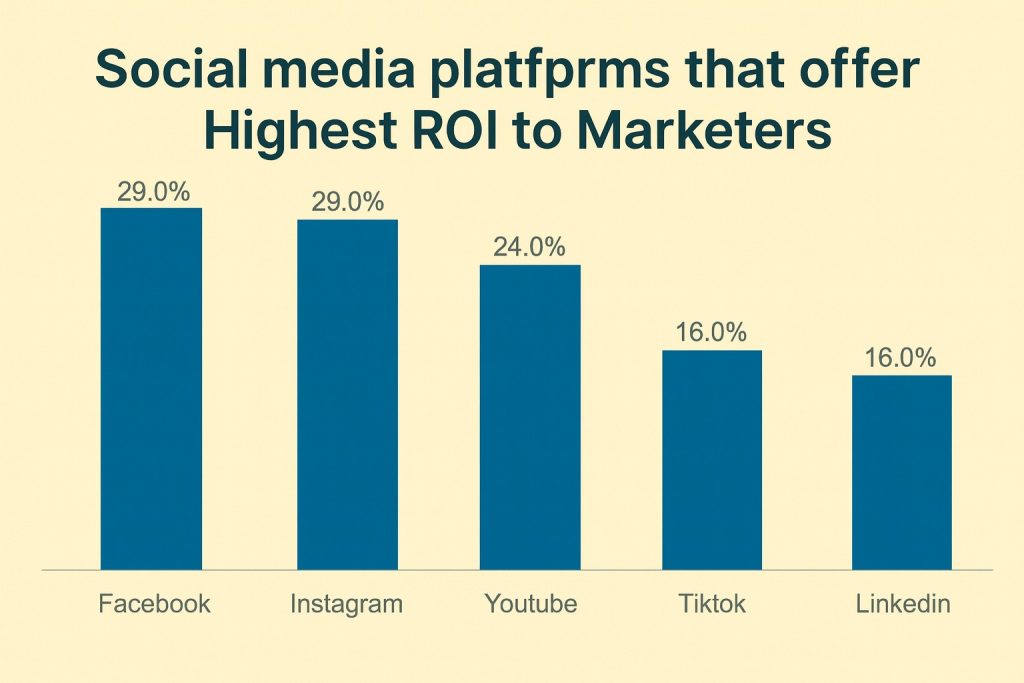
When you measure what matters, you don’t just justify your strategy — you strengthen it.
8. Standing Out in a Saturated Market
With millions of brands posting daily, visibility has become a war of creativity. The biggest challenge is differentiation — finding a voice that feels unique.
How to Overcome:
- Develop a signature brand tone: Be recognizable by style and language.
- Offer value others don’t: Focus on insights, experiences, or humor your competitors ignore.
- Double down on storytelling: Narratives stick longer than facts.
- Visual identity matters: Invest in consistent colors, fonts, and templates to make your posts instantly recognizable.
Standing out isn’t about being louder — it’s about being clearer, more consistent, and more human.
Final Thoughts on Building a Sustainable Social Media Strategy
Every lasting brand is built on connection, not clicks. The most successful marketers of the future will be those who treat social media not as a megaphone, but as a mirror — reflecting their brand’s truth, values, and voice back to their audience. The digital landscape will continue to evolve, but authenticity will always remain timeless. A sustainable social media strategy isn’t about chasing trends; it’s about creating trust. It’s showing up with purpose, sharing stories that matter, and building relationships that outlast algorithms.
Your brand’s future isn’t defined by viral moments — it’s defined by consistent value, emotional connection, and the courage to be real. Every post should serve a purpose, every story should inspire, and every comment should remind your audience that your brand sees them as people, not metrics.
So as you plan your next campaign, remember this: strategy builds reach, but authenticity builds loyalty. Stay consistent in your presence, intentional in your message, and compassionate in your tone. Because when your content begins to mean something to your audience, you stop marketing — and start mattering.
Your brand is not defined by how loud you speak, but by how deeply you connect.


